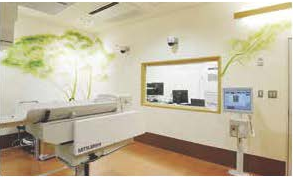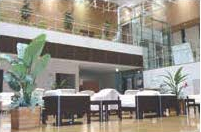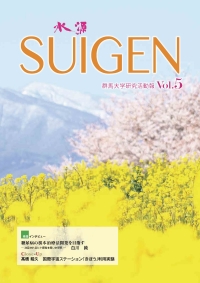


In Japan, diabetes is a national disease that
affects one in six adults. Professor Jun Shirakawa is dedicated to
finding fundamental treatments for diabetes and is currently one
of the most prominent researchers at the Institute for Molecular
and Cellular Regulation. One distinctive aspect of Professor
Shirakawa's research is using human pancreatic islets as the study
subject. Pancreatic islets are specific tissues within the
pancreas. Diabetes is a disease where blood sugar level rises due
to an insufficient amount of insulin and a decrease in the
capacity of pancreatic "beta cells" within the islets leading to
the onset and progression of diabetes. The study of pancreatic
islets, particularly on increasing the number of beta cells, is a
major focus. Therefore, it is crucial to conduct research using
human pancreatic islets rather than animal models that have
previously been the primary focus thus far. However, while
organizations in Europe and the United States have established
systems for distributing human pancreatic islets for research
purposes, such organizations do not exist in Japan or Asia.
Furthermore, Japan lacks regulations allowing the reuse of
isolated pancreatic islets for research purposes if they are not
used for transplantation. Consequently, Professor Shirakawa
obtained ethical approval for conducting medical research
involving humans and imported pancreatic islets from three
locations in Canada and the United States to help further research
in the field. In 2021, on the 100th anniversary of the discovery
of insulin, Professor Shirakawa received the Lilly Award from the
Japan Diabetes Society. There are high expectations for Professor
Shirakawa's research in the field.
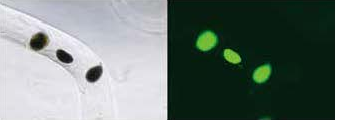
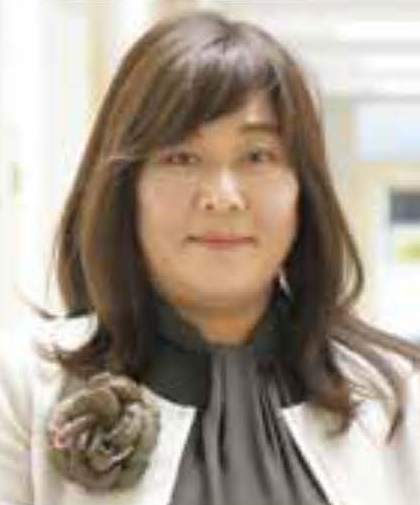
Associate Professor Kayoko Katayama has been involved in research related to national cancer control, with a focus on cancer epidemiology, for many years. Her current research theme is "Cancer Survivorship," she is a pioneer in this field as an epidemiologist in Japan. "Cancer Survivorship" refers to the process of living after experiencing cancer diagnosis and treatment, and it is an established concept in Europe and the United States. The environment in this field has undergone significant changes. Since January 2016, the "National Cancer Registry" has been launched based on the law, and statistics on all cancer incidences are being collected in all prefectures. The government has also started cancer education and awareness campaigns targeting the entire population. The key to research methodology is "collaboration with patients and the community." Associate Professor Katayama is actively involved in developing various educational programs on cancer in collaboration with medical professionals, including physicians and patients, and disseminating information.

The research theme of Associate Professor Reiko Roppongi is the morphogenesis of synapses in memory and learning. A synapse is a contact structure between two neurons when information is transmitted from one neuron to the next in the brain. When she was a student in the Department of Information Engineering in the Faculty of Engineering, she enjoyed volunteering with children on the autism spectrum. It made her aspire to work in a role supporting these children and their families. She had two options: becoming a clinical psychologist or contributing through brain research. For her graduation thesis, she simulated neural transmission efficiency by programming neural networks. Gradually, she became fascinated by the intricacies of cells and chose the path of research. She pursued advanced studies in the Graduate School of Medicine, specifically in Cellular and Molecular Pharmacology, encompassing challenges in neuroscience and molecular biology. Since then, she has been relentlessly pursuing her dreams and achieving significant results.


Assistant Professor Koki Kamiya is an aspiring
researcher who seeks to open the door to a new era of liposome
(artificial cell membrane) research by integrating knowledge from
chemistry, biology, and mechanical engineering. Liposomes are
small vesicles composed of artificial cell membranes that mimic
the structure of human cell membranes. The cell membrane is a
barrier that separates the interior and exterior of cells,
consisting of a double layer of phospholipids embedded with
proteins. It plays a crucial role in various life processes, such
as controlling the entry and exit of substances into cells and
facilitating information transmission. Assistant Professor Kamiya
aims to understand the functions of biomolecules, including
membrane proteins, using liposomes, with the following goals in
mind:
・Creating artificial cells that incorporate partial
cell functions and react efficiently
・Understanding the origin of life through the
utilization of the created artificial cells

Assistant Professor Tsuyuka Sugiishi is developing a novel, low-waste synthesis method for organic fluorine compounds. Fluorine atoms are among the smallest elements and have the highest electronegativity (the ability of an atom to attract electrons), second only to hydrogen. As a result, organic compounds containing fluorine exhibit unique properties such as excellent heat resistance, water resistance, oxidation resistance, and metabolic stability. They are used in various chemical materials such as resins, paints, and water-repellent agents, as well as pharmaceuticals and agrochemicals. While diverse synthesis methods are desired, discovering an environmentally friendly approach with minimal waste in fluorine compound synthesis is expected to contribute to the advancement of industrial synthesis.
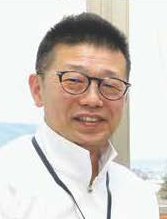
Private space travel has finally begun. Humanity is once again setting its sights on the Moon and Mars. The era of "living in space," going farther and staying longer, is becoming more realistic. In space, cosmic radiation, including heavy particles, is abundant. Gravity is extremely weak. While often referred to as "zero gravity," it is more accurately described as "microgravity" that approaches infinitesimal "zero." At Gunma University, there is a researcher dedicated to considering the health of space travelers. His name is Akihisa Takahashi, and he is from the Heavy Ion Medical Center. His expertise lies in radiation biology, and his current research theme is "Does cancer progress faster in space?" He is currently collaborating with the Japan Aerospace Exploration Agency (JAXA) to explore the feasibility of conducting experiments in the Japanese Experiment Module "Kibo" on the International Space Station (ISS).
The Heavy Ion Medical Center is a division of Gunma University Hospital dedicated to cancer treatment using heavy ion beams. The irradiation facility is located in a corner of the Showa Campus. Gunma University's heavy ion therapy device began treatment in March 2010, making it the third facility in Japan (currently, seven facilities nationwide). Being the first facility attached to a university hospital, it specializes in comprehensive care for patients with coexisting diseases or those requiring multidisciplinary treatment involving various medical departments. It has accumulated a wealth of treatment records, knowledge, and expertise.
The treatment process involves consultation, examinations, treatment planning, and subsequent heavy ion beam irradiation. Follow-up observations are also conducted based on the patient's condition. One notable feature of nursing care is that the same nursing staff in the department is responsible for their respective patients from their initial visit until the completion of treatment. Nurses guide patients and serve as their support and consultation partners until they return to the waiting area after each examination or treatment session.
The interior of the CT simulation room is
characterized by gentle-colored plaster walls and paintings of
keyaki (zelkova) trees created with a trowel. Professor Mari
Tanaka from the Faculty of Education designed the interior,
saying, "Please experience the peaceful atmosphere created by the
plaster. The paintings of keyaki trees, window frames made with
Akagi Mountain soil, and silk fabrics incorporate traditional
craftsmanship from Gunma. This space, which has won the Japan
Plaster Association's award, is filled with the thoughts of
healthcare professionals, and we hope that patients can undergo
examinations here with a sense of security."
